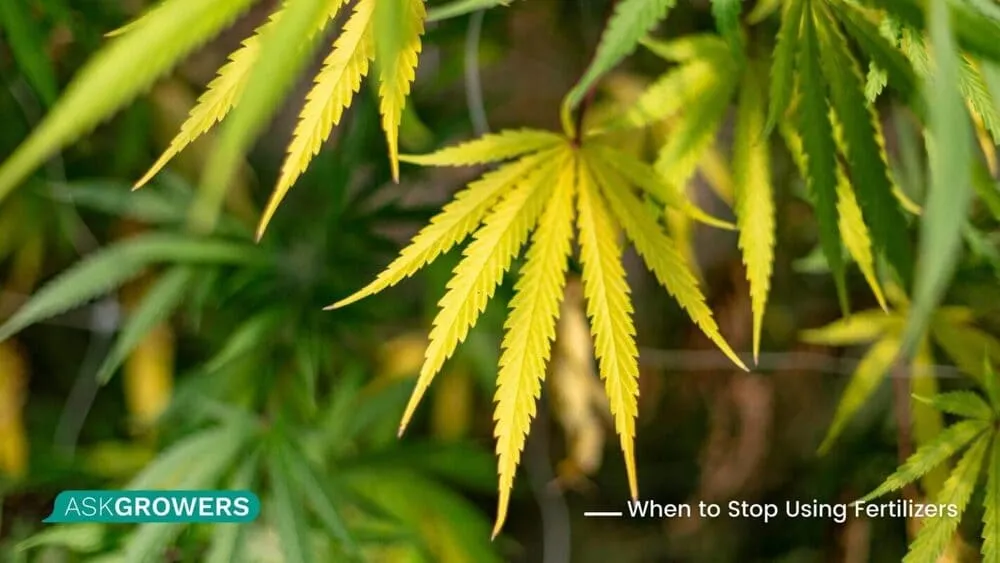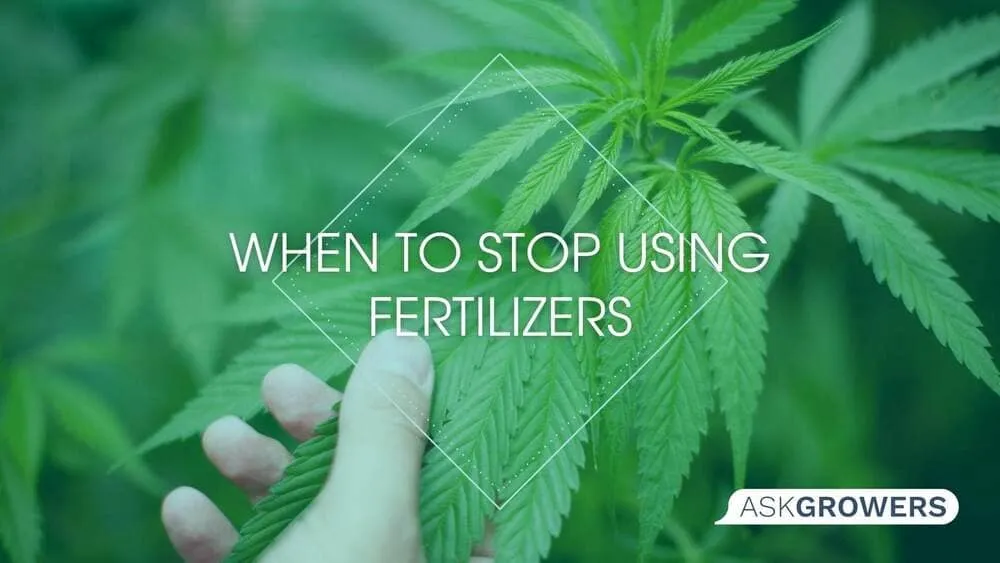Using fertilizers is one of the ways to increase cannabis yield. These chemicals serve as food for the plant, providing vital nutrients for healthy growth and cannabinoid production. However, its application in home cannabis cultivation is open to misuse. Newbies can easily add too many fertilizers to the growing medium, thus damaging the delicate plants. So, how do you know when it’s time to stop using fertilizers? This article provides useful marijuana fertilizer recommendations to help you avoid over-fertilization and use nutrients wisely.
How Much Fertilizer Does Cannabis Need?
The exact amount of fertilizer your marijuana needs may vary on several factors, such as:
- The type and quality of the soil (seeds for outdoor)
- Cannabis variety
- Plant stage of growth
- Type of plant food (organic vs. chemical)
Cannabis does not need fertilization at the germination stage, but as it grows, more and more nutrients are needed to sustain its development. To make things easier for growers, fertilizer producers add detailed directions and recommendations on the labels. These are usually enough to determine the approximate amount of fertilizer to be delivered to the plant.
Notably, the optimal results can be achieved by combining several types of fertilizers (e.g., manure and chemical fertilizer). Research indicates that this combination has a positive synergetic effect on cannabis growth. However, the risk of adding too many nutrients increases as you combine the fertilizer types.
To know exactly what you are doing, purchase a total dissolved solids (TDS) meter. This tool measures the general level of nutrients and may help you determine when it’s time to slow down and let the growing medium rest for a while without fertilizers. It does not say which specific nutrients are in abundance, so it can only be used as an additional tool. For the most accurate results, you can use chemical test kits or submit a sample of the growing medium to the lab. However, these options are expensive and are rarely used by small home growers.
Symptoms of Over-Fertilization
Researchers explain that cannabis plants suffering from nitrogen deficiency exhibit stunted growth and leaf discoloration. But what about excessive consumption of nitrogen and other nutrients? It may seem a common sense to add as many nutrients as possible to facilitate growth, but overeating can be as bad for marijuana as for people. Experts emphasize that overabundance of nutrients can result in a nutrient burn or toxicity.
So, what do fertilizer burn weed plants look like? Pay attention to the following signs:
- Yellow, crispy tips of the leaves
- “Fried” around the edges
- Defoliation
- Slow or no growth
- Fertilizer crust on the surface of the growing medium
- Blackened or stringy roots
Notably, as the plant continues to consume too many nutrients, the leaves become darker and curlier. Even if you leach out the excessive fertilizer, the damaged leaves will not change their appearance. To summarize, if you notice any of the listed symptoms, stop using fertilizers! Allow the plants to recover and carefully monitor their further growth.

Addressing the Fertilizer Burn Problem
Learning how to cleanse cannabis plant of fertilizers is important before you add any nutrients to the growing medium. Make sure you know what to do in advance to initiate timely rescue measures.
Tackling the over-fertilization problem is easy if you use soluble chemical fertilizers. These can be washed out of the growing medium with water. Flush the affected plants with water for several days and monitor plant response. Meanwhile, re-read the fertilizer label to ensure that you followed the recommendations. Most of the time, growers do not pay enough attention to the permitted nutrient levels stated on the packaging.
Fixing a fertilizer burn in a hydro system is also relatively easy. Add some fresh water to dilute the solution, but do not hurry. Changing water entirely may be too stressful for the plant.
Granular fertilizers are more difficult to eliminate from the soil. If the granules are visible, pick them up from the soil before they dissolve and intoxicate it. You can also use water, but it may not be very effective because it cannot remove all granules from the growing medium.
Moreover, examine the leaves and stems. If the burn has damaged some parts significantly, it’s better to snip them off to prevent rotting. However, the leaves whose tips have yellowed slightly may stay, as they will not affect the yield.
Finally, check whether the identified symptoms are not caused by other problems. You may lose precious time by trying to flush nutrients while, in reality, there’s a different source of the problem. Confusion may be caused by other issues, such as excessive lighting and nutrient deficiency. Check photos of each condition online to learn to distinguish them in your cannabis garden.
Conclusion
Excessive fertilization is a common problem among over-zealous growers. It can damage plants and decrease the yield, so it’s crucial to notice the slightest changes in marijuana appearance. Luckily, there are effective rescue measures that help prevent further nutrient burn. If you initiate a timely response, your plants will remain safe and healthy.

